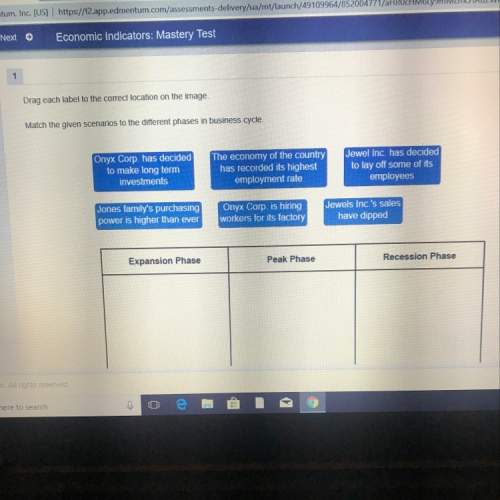
Business, 19.11.2019 02:31 OliviaParis8837
The december 31, 2018, inventory of tog company, based on a physical count, was determined to be $458,000. included in that count was a shipment of goods received from a supplier at the end of the month that cost $58,000. the purchase was recorded and paid for in 2019. another supplier shipment costing $24,000 was correctly recorded as a purchase in 2018. however, the merchandise, shipped fob shipping point, was not received until 2019 and was incorrectly omitted from the physical count. a third purchase, shipped from a supplier fob shipping point on december 28, 2018, did not arrive until january 3, 2019. the merchandise, which cost $88,000, was not included in the physical count and the purchase has not yet been recorded.
the company uses a periodic inventory system.
required:
1. determine the correct december 31, 2018, inventory balance and, assuming that the errors were discovered after the 2018 financial statements were issued, analyze the effect of the errors on 2018 cost of goods sold, net income, and retained earnings. (ignore income taxes.)
2. prepare a journal entry to correct the errors.

Answers: 3
Another question on Business

Business, 21.06.2019 18:20
Alyeska services company, a division of a major oil company, provides various services to the operators of the north slope oil field in alaska. data concerning the most recent year appear below: sales $18,000,000 net operating income $6,300,000 average operating assets $35,200,000 1. compute the margin for alyeska services company. (round your answer to 2 decimal places.) 2. compute the turnover for alyeska services company. (round your answer to 2 decimal places.) 3. compute the return on investment (roi) for alyeska services company. (round your intermediate calculations and final answer to 2 decimal places.)
Answers: 1

Business, 22.06.2019 02:00
Alandowner and his neighbor purchased adjoining undeveloped lots. after both built homes on their respective lots, the landowner suggested to the neighbor that a common driveway be built where the two lots joined. the neighbor agreed. the landowner and the neighbor split the cost of constructing the driveway and entered into a written agreement to equally share the costs of its upkeep and maintenance. the agreement was recorded in the county recorder's office. two years later, the neighbor built a new driveway located entirely on his lot. the common driveway, which the landowner continued to use but which the neighbor no longer used, began to deteriorate. the landowner asked the neighbor for money to maintain the common driveway, but the neighbor refused to contribute. three years later, the neighbor conveyed his lot to a friend. the friend entered into possession and used only the driveway built by the neighbor. by this time, the common driveway had deteriorated badly and contained numerous potholes. the landowner asked the friend to pay half of what it would take to repair the common driveway. the friend refused. the landowner repaired the driveway and sued the friend for 50% of the cost of repairs. will the landowner prevail?
Answers: 2

Business, 22.06.2019 04:00
Medtronic, inc., is a medical technology company that competes for customers with st. jude medical s.c., inc. james hughes worked for medtronic as a sales manager. his contract prohibited him from working for a competitor for one year after leaving medtronic. hughes sought a position as a sales director for st. jude. st. jude told hughes that his contract with medtronic was unenforceable and offered him a job. hughes accepted. medtronic filed a suit, alleging wrongful interference. which type of interference was most likely the basis for this suit? did it occur here? medtronic, inc., is a medical technology company that competes for customers with st. jude medical s.c., inc. james hughes worked for medtronic as a sales manager. his contract prohibited him from working for a competitor for one year after leaving medtronic
Answers: 2

Business, 22.06.2019 12:30
Consider a treasury bill with a rate of return of 5% and the following risky securities: security a: e(r) = .15; variance = .0400 security b: e(r) = .10; variance = .0225 security c: e(r) = .12; variance = .1000 security d: e(r) = .13; variance = .0625 the investor must develop a complete portfolio by combining the risk-free asset with one of the securities mentioned above. the security the investor should choose as part of her complete portfolio to achieve the best cal would be a. security a b. security b c. security c d. security d
Answers: 3
You know the right answer?
The december 31, 2018, inventory of tog company, based on a physical count, was determined to be $45...
Questions


Geography, 06.09.2020 07:01




Mathematics, 06.09.2020 07:01

Mathematics, 06.09.2020 07:01


Biology, 06.09.2020 07:01

English, 06.09.2020 08:01


Physics, 06.09.2020 08:01

Social Studies, 06.09.2020 08:01

Social Studies, 06.09.2020 08:01




History, 06.09.2020 08:01





